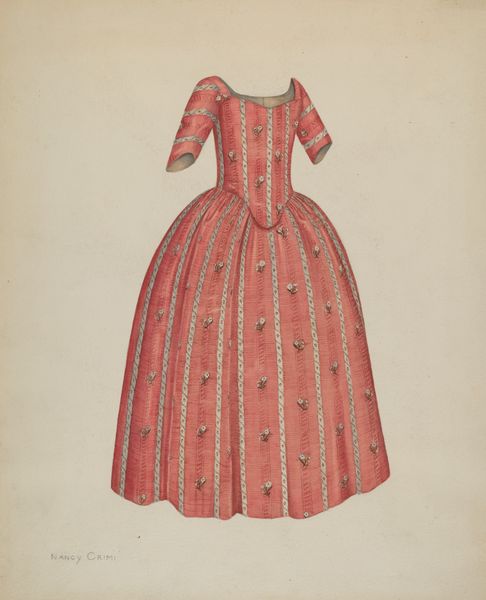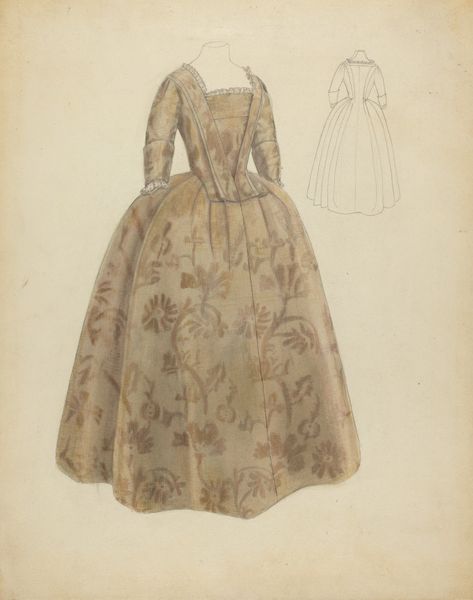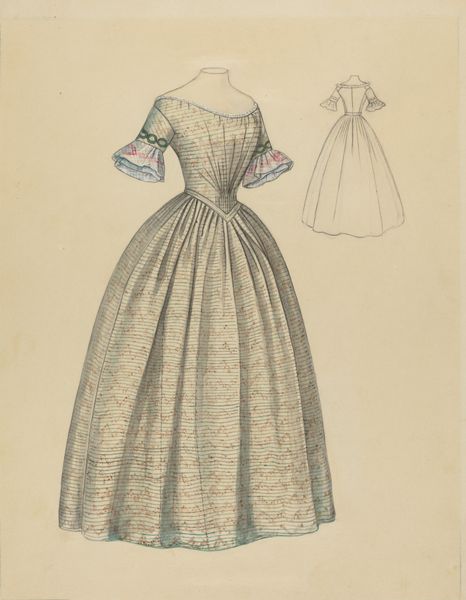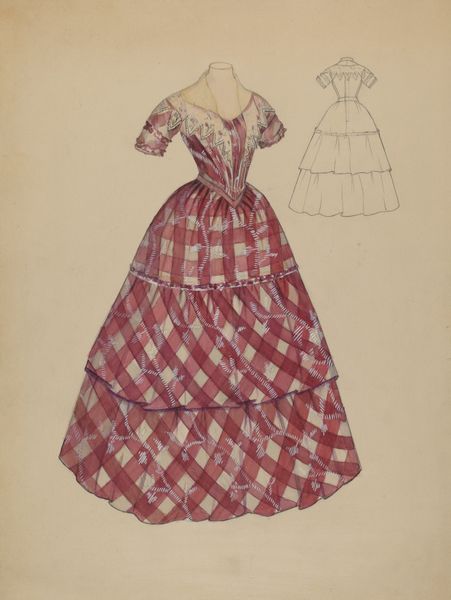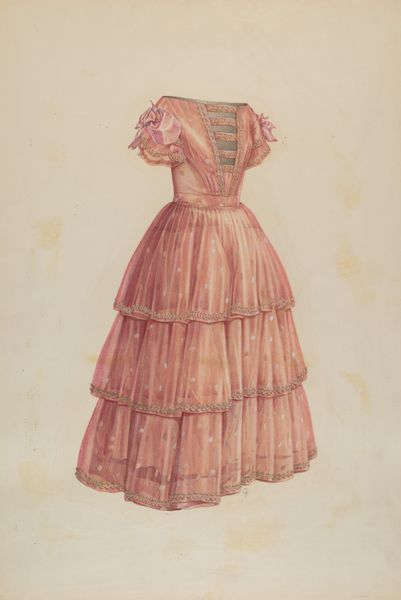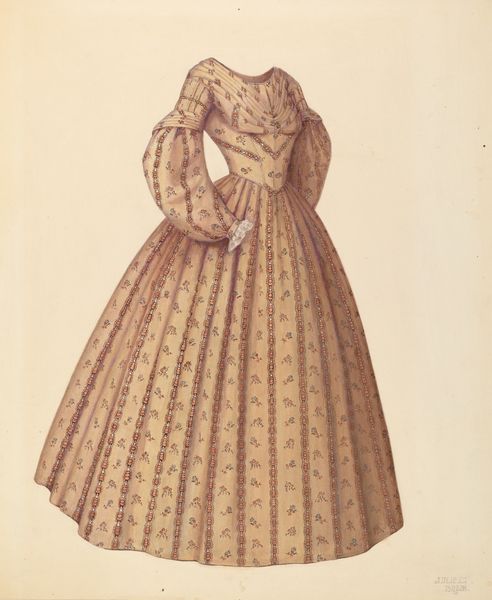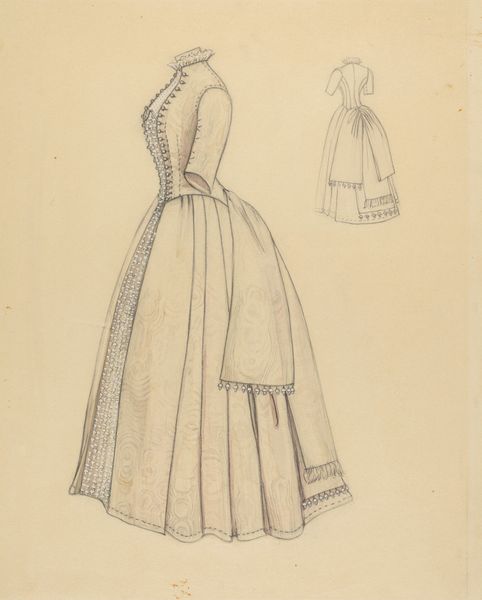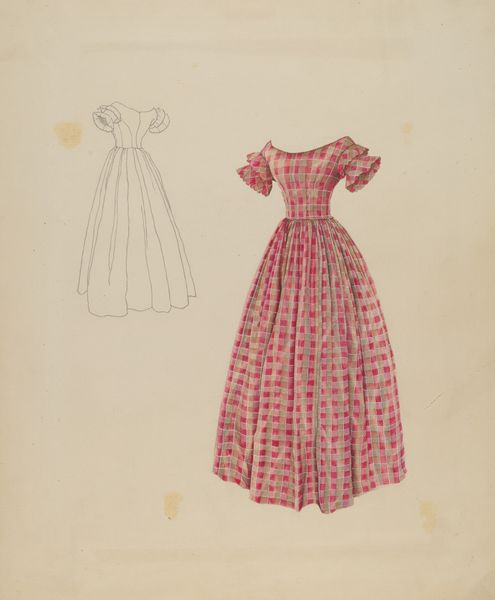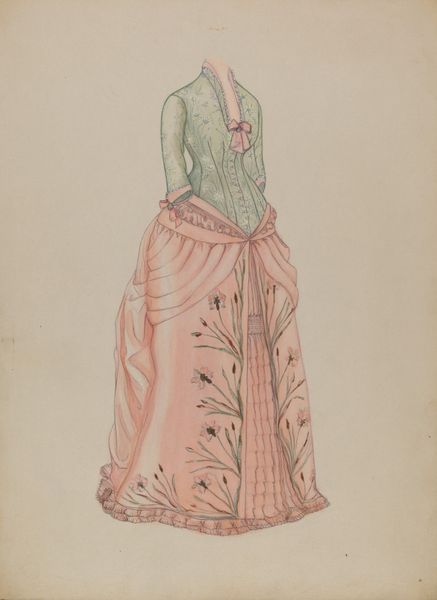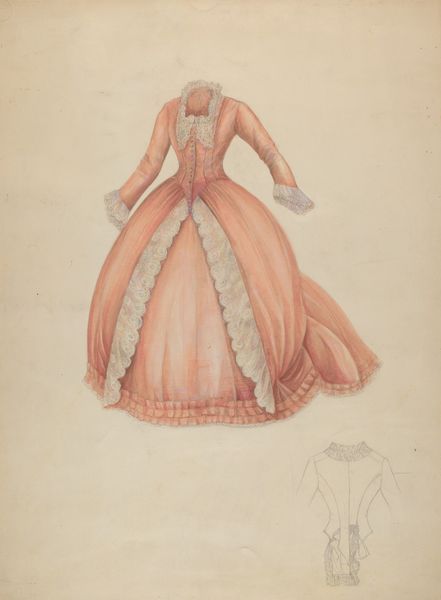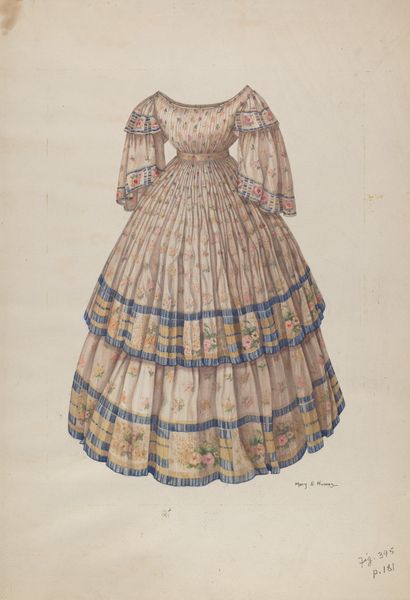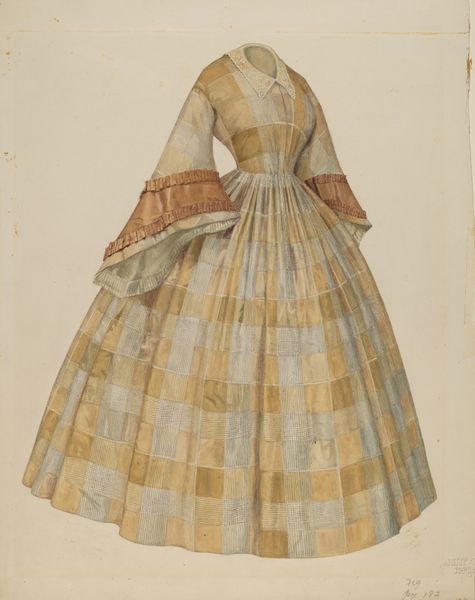
drawing, watercolor
#
drawing
#
figuration
#
watercolor
#
historical fashion
#
watercolour illustration
#
history-painting
#
fashion sketch
Dimensions: overall: 30.6 x 22.7 cm (12 1/16 x 8 15/16 in.)
Copyright: National Gallery of Art: CC0 1.0
Editor: This watercolor drawing from between 1935 and 1942, attributed to Jean Peszel, is called "Child's Dress". I'm immediately struck by its formality despite its subject matter – it feels more like an architectural rendering than a playful garment. What do you see in the work from a more formal perspective? Curator: A fascinating initial reaction. If we put aside its cultural coding, focusing purely on form, we see a study in controlled ornamentation. The vertical stripes create a visual rhythm, punctuated by repeating floral motifs. Notice the subtle gradation of the red hues; they suggest volume and depth on an otherwise flat surface. The use of watercolor allows for delicate washes and a translucent quality. Editor: So, the appeal is in how these elements – the stripes, the flowers, and the colors – all work together formally? It almost sounds like a geometric puzzle with floral interruptions. Curator: Precisely. It’s the interplay between these elements that constitutes the aesthetic experience. Consider also the careful arrangement of line and color. The artist uses line to define the form and the color to modulate the surface and enhance its presence on the page. There is an attention to detail that makes it difficult to reduce this merely to representation. Does the unseen child, then, disrupt the semiotic closure? Editor: The unseen child definitely adds an extra layer. It's like the suggestion of life disrupting a meticulously constructed visual field. Looking at it this way helps me appreciate the visual texture as more than just a historical artifact. Curator: Indeed. The beauty of formal analysis is in revealing those aesthetic complexities that often lie beneath the surface. Understanding the art of seeing makes art more, not less. Editor: This has really sharpened my understanding. I see the composition now as a very thoughtful play of geometric organization alongside those bursts of floral texture and detail. Thanks for your expertise.
Comments
No comments
Be the first to comment and join the conversation on the ultimate creative platform.
